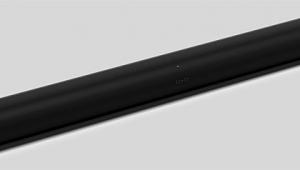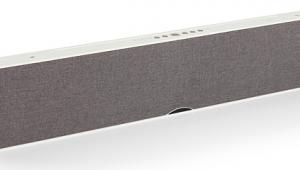Great review. I happen to have two of these bars, my only concern about them was that you had to put subwoofer behind, in order for the satellite speakers to be connected since the cable length is very limited. How did you manage to accomplish your setup? How did you hide the RCA extensions?
Vizio S5451w-C2 Soundbar System

AT A GLANCE
Plus
True 5.1-channel sonics from a soundbar system
Reasonably neutral tonal balance
Fairly deep response
Unexpectedly substantial volume
Minus
Restrained treble
No IR passthrough
THE VERDICT
This Vizio is a large, affordably priced, true 5.1-channel soundbar system that actually plays loud, with respectable bass extension and very presentable sound.
Vizio has come a long way from its roots in a small PC-monitor brand (Princeton) a decade or so ago. Depending on your metrics, the California firm is now the No. 1 brand in both LCD HDTVs and soundbars. Today, the soundbar has ridden the coattails of the big-screen explosion to become an important product category in its own right. And with many serious loudspeaker makers getting into the game (likely a matter of survival in some cases), the ante has been raised so that what was once a mere profit-sweetening sales-ticket afterthought to a TV sale is now a hotly competitive category where performance and features figure as prominently as price. The winner here is the consumer— especially less audio-schooled ones, who get better sound without necessarily demanding it or even being aware that they wanted it.
What’s Under the Hood
Vizio’s new S5451w-C2 (what a mouthful) soundbar system is a case in point. The soundbar itself is an ultra-slim, ultra-wide 54 inches—a breadth that just happens to match that of most current-generation, slim-bezel 60-inch TVs, including Vizio’s own, as well as many older, thicker-edged 55s. And since 60 inches is the new 50, much as 55 used to be the new 42, this should make it one hot ticket indeed.
The best news is that those who punch it will receive a true 5.1-channel system. There are discrete left, center, and right 3-inch full-range drivers (plus dual oval passive radiators) in the bar itself—“full-range” here being a term of art for one-way, tweeter- and crossover-less deployment. Packed with the soundbar are a pair of small, single-driver surround speakers (with similar 3-inch drivers) and a wireless 8-inch subwoofer that also houses discrete amp channels, with wired outputs for the surrounds. All are bundled into a singular, python-swallowed-a-capybara carton, one of the cleverest origami creations I’ve encountered in consumer electronics packaging.
Setup
At just over 3 inches in depth, the soundbar should wall-mount nicely (a full-sized template and brackets are supplied), while the subwoofer is slim enough that it could go directly beneath, where it certainly belongs (despite its umbilical connection to the surrounds; more on this later) without inducing too much domestic trauma. The surround speakers are small and lightweight and are also provided with threaded inserts and hardware for easy on-wall locating.
Setting up the entire system is straightforward enough. It’s essentially plug-n-play, especially since the wireless sub—wireless, that is, only in terms of connection to the soundbar—arrives pre-paired. That said, two points may trip up less experienced users (who, I presume, include most typical soundbar buyers). First, the S5451w-C2 is a fully HDMI-capable soundbar, though with only a single plain vanilla HDMI input and a marked HDMI output that can be utilized as a second HDMI input with ARC (Audio Return Channel) capability. Therefore, the preferred connection scheme is a single HDMI cable to a TV equipped with an ARC HDMI input/output. In this case, a single additional HDMI source, beyond what might come in from the TV’s own streaming platform or input jacks, can be connected directly to the Vizio’s sole remaining HDMI input.
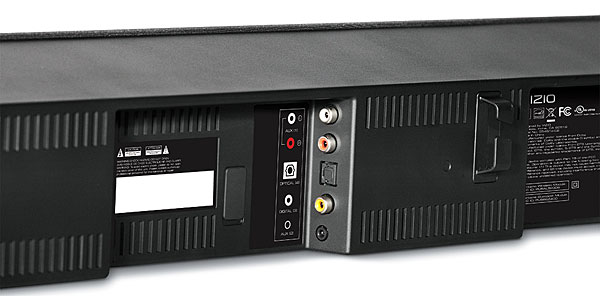
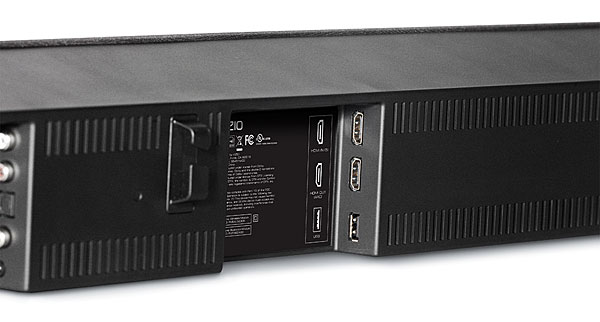
For that one directly connected device—say, a Blu-ray player or game console—this setup ensures that the soundbar receives the highest-integrity, multichannel Dolby Digital or DTS signals for its onboard Dolby Digital and DTS decoders. However, even with ARC available in your HDTV (and it won’t be in those that predate HDMI 1.4a), the lack of additional HDMI inputs on the Vizio can become problematic if you have even a second HDMI source. You can’t necessarily count on connecting it to the TV’s additional HDMI inputs to pass them back to the soundbar. ARC is implemented differently among TVs, and your set may only pass signals to a soundbar or receiver from its internal tuner or streaming platform, not those sources connected to the TV. If it does happen to pass audio from other sources connected to the TV’s HDMI inputs, it may downmix multichannel bitstreams from those sources to stereo and output them via HDMI ARC as either two-channel Dolby Digital or PCM, from which the bar must then artificially derive center and surround channels. Ditto, of course, for any HDMI source whose audio is sent through the TV’s optical digital output and fed back to the Vizio that way. On that note, you can, of course, still route the audio from additional video sources directly to the soundbar via its other inputs (one each coax and optical digital inputs, two analogs; there is also aptX Bluetooth and a USB connection) and run the video portion of the signal (HDMI or otherwise) separately to the TV, causing source selection to become a two-step process involving both the Vizio and TV remotes.
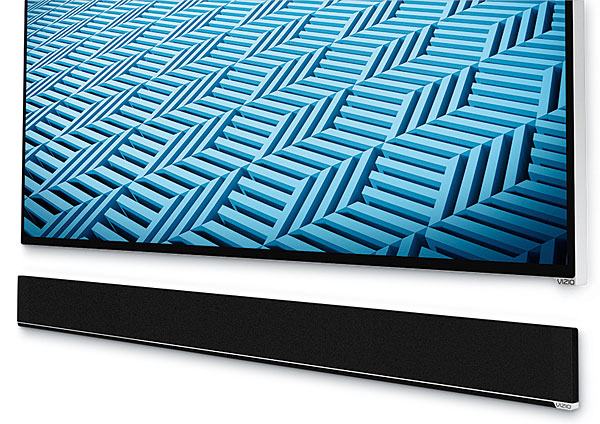
The second potential bump in Route Vizio 5.1 is that the surround speakers themselves, and their dedicated outputs on the subwoofer, use RCA jacks for speaker-wire connection—just like the portable plastic record player you used to share with your brother. Vizio supplied me with a pair or preterminated 4-meter (about 13 feet) speaker wires with my evaluation sample, though the company rep reported that the normally included length is twice that. Fortunately, I had a pair of long RCA extensions around, but most consumers won’t, and in any event, either length would have been short for routing along carpet edges and behind furniture from what proved to be the ideal sub location up front to the back of my good-sized room. As evidenced by a diagram on Vizio’s Website, espousing “the ideal configuration,” the company is making the assumption that you’ll place the subwoofer at the rear of the room and have a short run to the speakers, though, as you’ll read, this is hardly the best spot for it.
I placed the soundbar just below my 52-inch set’s bottom edge on a couple of low speaker stands, just an inch off the wall, with the surrounds on my usual high shelves astride the listening position. I began with the subwoofer in my established sub location, behind and to the right of where my right-front speaker normally resides, but this immediately proved far too localizable; male announcers, dependent on pitch and volume, seemed to originate almost as much from the sub as from the soundbar’s center, where they belonged. The obvious solution was to relocate the sub directly beneath and centered on the soundbar. (I happened across an online “expert review” of the Vizio that, with similar reference to the short supplied cables, suggested locating the sub in the rear of the room where Vizio recommends. Laughable!)
I moved the sub several feet from the wall to get the best sub/bar integration on lower mid frequencies like male announcers and dialogue, but at a substantial sacrifice in bass extension and output—to say nothing of the unlikelihood of actual buyers to tolerate such placement. Consequently, I returned it right against the wall, directly beneath the soundbar.
- Log in or register to post comments


I just got this soundbar and am in the process of installing it. I want to use a different set of surround speakers (Leviton AESS5) connected to the subwoofer. I would think that this is straightforward but the VIZIO support response says that only the supplied speakers will work (no details why though). Has anyone tried connecting different speakers to the subwoofer? What is the subwoofers output impedance? Any chance of frying the subwoofer or speakers?















